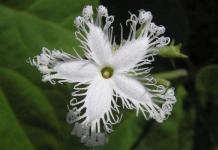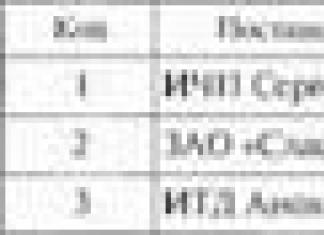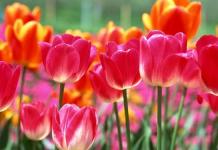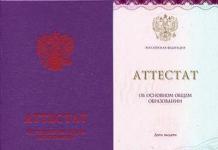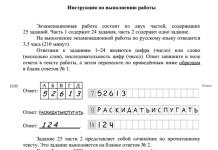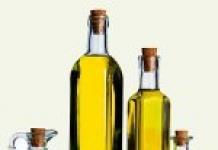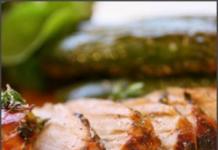The soil, depleted by crops that take away its nutrients, loses its productive capacity over time. Fertilizers are used to enrich the soil and restore this ability, that is, to return the substances taken from it to the soil. If we know what the soil needs, that is, in other words, what fertilizer it needs, then there is no doubt that we will be able not only to avoid unproductive costs, but also to get a certain benefit. The only true pointer in this respect is the preliminary, in small sizes produced experience. Depending on what is used to enrich the soil, different results are obtained and this is worth understanding. The following cases can serve as proof of this: the old garden, despite its constant fertilization with horse manure, ceased to produce cabbage, which turned into a huge deciduous cabbage under the influence of a harmful excess of manure and too abundant accumulation of humus and organic substances in the soil, which are harmful to the development of plants. . On the advice of experienced gardeners, a deep cultivation of this garden was carried out, and the subsoil was mixed with the soil, after which the garden gave excellent harvests without any fertilizer. Here, apparently, humus substances and their decomposition products far exceeded their normal ratio to the mineral parts of the soil, the ratio necessary for the production of good cabbage.
Other measures that serve to maintain and restore soil productivity are based on the weathering of soil particles, which is due to deep and frequent loosening, which opens up a large surface of contact between air and soil. The cultivation of plants that do not deplete the soil a little, such as onions, cucumbers, strawberries, raspberries, currants, etc., with proper care, elevates the productive power of the soil, but even in this case, to achieve satisfactory results, manure fertilizer should be used.
In modern times, various fertilizers are found in trade, which landowners use with success, especially in Western Europe, in the production of grains and fodder plants; but I cannot say that these means could be applied in horticulture and horticulture with the same success. Perhaps some of them are of value where it is impossible to use manure or where this latter is not available at all. Despite the high price of all so-called artificial fats, a pood of which is equal in price to one cart of manure, they nonetheless represent some convenience in transportation, as a result of which their use is sometimes cheaper than manure.
All varieties of fertilizers, depending on their origin, can be divided, from our point of view, into 5 groups.
Fertilizers of animal origin
Animal fertilizer, i.e., one in which the body of animals or parts of it serve as a fertilizer; all these fats are predominantly nitrogenous; the main ones are the following:
- 1 Fish guano prepared in Norway from the offal of herring and other fish, even whole fish of low value or not eaten. Fish and fish waste are dried and turned into powder by machines, which acts very strongly and quickly, but for a short time, no more than a year. The inhabitants of the aforementioned coastal areas act much more simply: they do not dry or grind the garbage, but directly take it to the fields or gardens and plow or bury it, as soon as possible, because these substances spread an unbearable smell and spoil the air. This uneven distribution of fertilizers in the soil has the consequence that the plants also develop unevenly; so, for example, where a huge cod head has fallen, a huge bush of a dark bluish-green color grows, and next to it is a pitiful pale plant. This disadvantage is eliminated by factory processing of fish waste.
- 2 Horn shavings, hair, feathers, hooves, etc. are also used in crushed form and are a strong nitrogenous fertilizer, which has a particularly beneficial effect on the green parts of plants. Fertilizers of animal origin, in general, are available in significant quantities only in those places where various animal products are processed.
- 3 Waste from slaughterhouses, consisting of the blood and some of the internal parts of animals, is found in large quantities near large cities and can also be considered a highly effective fertilizer. The same category includes the corpses of dead animals. It is clear that the processing of these substances, like fish guano, would greatly enhance their fertilizing qualities and make them more usable.
- 4 Animal bones, as containing a significant amount of phosphate lime, we refer to mineral fertilizers. All animal fertilizers, both fast and powerful, are used in small quantities, most conveniently as a local fertilizer for individual plants, mainly for cabbage. You can put fertilizer in a circle of plants after they are planted, and the radius of this circle should be about 2 inches, and then push a little local soil onto the fertilizer with a pick. It is inconvenient to leave this fertilizer, as well as guano, uncovered by anything: firstly, it loses many useful parts through volatilization, and, secondly, a lot of insects start up in it, if not feeding on it, then laying eggs in it , from which larvae subsequently develop that can harm plants.
How to use manure as an organic fertilizer for garden soil: how can it be used as an organic fertilizer for the soil
Manure as a fertilizer or excrement of animals and humans, is used in agriculture from a long time ago.
Of all kinds of fertilizers, the common barn dung of large domestic animals remains the chief fertilizer wherever it can be obtained in sufficient quantity; but since this is not always possible, they resort to its various surrogates. Organic manure fertilizer contains all the necessary nutrients for plants, acts more evenly and longer than the above-described class of fertilizers, heats up the soil and significantly improves it physical properties especially if it is heavy and cold.
- 1 Horse manure warms the soil the most, decomposes faster than other types of manure and acts quickly. Therefore, it is especially suitable for cold and heavy soils, which require increased warming and loosening, and in which the decomposition of the fertilizer is slower; the effect of horse manure is shorter than that of cattle manure. Before using manure as a fertilizer, it is important to understand its types and choose the right one.
- 2 Fertilizing the soil with cattle manure does not warm the soil and decomposes slowly, but exhibits a long duration of action; it is predominantly suitable for light sandy soils that do not require artificial heating or even suffer from it. It is not uncommon to acquire a mixture of horse and cow dung; this mixture is an excellent fertilizer, only not suitable for greenhouses, because it does not heat up properly and produces fungi that harm plants.
- 3 Fertilization of the land with the manure of small livestock - sheep and pigs - is rarely obtained in significant quantities; in action, the first approaches horse, and the second - cattle manure; both of these varieties are worthy of being considered lower than the previous two.
It is far from always possible to use manure fertilizer, since it takes time to prepare. What is the best way to keep manure in manure heaps is of little concern to gardening, because gardeners do not, or very little, livestock, but acquire fertilizer by purchase. We only note that manure for fertilizing the garden, located whole year under the feet of the animals, which are given bedding, as is done on some of our farms, is much stronger than the manure that is daily raked out of the stables and piled up in the open air. Farmyard manure, soaked in urine and not weathered, contains substances more nutritious for plants. In those places of the soil where such manure gets, its effect is noticeable even in the third year. Dung from well-fed animals is much better than from badly fed animals.
It may be thought that fresh fertilizer has the further advantage that the ammonia developed during decomposition is absorbed by the soil and therefore remains in favor of the plants, while the manure maturing in heaps loses the formed ammonia, which in this case escapes into the air. For fertilizer fruit trees and berry bushes can also be used without fear fresh manure, but only as a surface fertilizer; it should not be buried earlier than after six months; if after this period there is still something left, then it should be buried. Having lain in the summer, the manure sinks into the soil by itself, but its loosening, nevertheless, is necessary, otherwise it is too densely caked and becomes too inaccessible to the influence of air.
As regards the amount of fertilizer used in a certain area, it can be very different, depending on the demands of the cultivated plants, on the properties of the soil and the fertilizer itself.
The smallest amount of manure required for fertilization, in my opinion, would be 240 good wagons per tithe = 1 wagon per 10 square meters. sazhen. On heavy, clayey, deeply cultivated soil, a double amount is placed, 480 carts \u003d 2 carts per 10 square meters. sazhen, in the first crop rotation, in a year; then reduce its number to 350 and 300 wagons. After using manure as a fertilizer for a garden crop for 10 years, the soil improves to the point that it is enough to produce fertilizer in two years for the third.
Bird droppings, especially chicken and pigeon droppings, are often applied and act quickly and strongly, but not for long, compared with the dung of herbivorous domestic animals. Bird droppings are most conveniently applied in a dry form, in the form of a fine powder as a local fertilizer; it is used in a handful for every plant or in the form of a thin layer poured onto the surface of the ridges, and it is mixed with the earth with an iron rake, pitchfork or hoe.
Grinding pigeon manure, which is always obtained from the attics of city buildings in a dry and compacted form, is somewhat difficult. The easiest way is to crush it with wooden rammers on the pavement or on the threshing floor, sift and the resulting large residue is crushed again. Where there are mills available that are not used for grinding grains of grain, it is best to grind it between millstones. Two parts of pigeon or chicken manure prepared in this way corresponds in strength to one part of guano, but still this manure is much more profitable in price than guano. Fertilizer from water poultry, especially goose, is more harmful than useful in its properties.
Guano is nothing but the droppings of seaside birds, found in various American islands in a greater or less degree of decay; sometimes it is so decomposed that it is difficult at first glance to recognize its origin. More often than other varieties in European trade, Peruvian guano is found, which is famous for its especially good effect. The action of guano is extremely strong, and therefore it is used only in small quantities or mixed with other substances, for example, mixed with compost soil. Guano, as well as fish guano or pigeon droppings, is most conveniently used as a local fertilizer for individual plants or mixed with the ground; it is scattered in a thin layer on the surface of the soil, on which continuous or frequent planting is carried out. Due to its unusually beneficial effect, guano is used no more than half a handful per individual plant, or one pood per 50 square meters. sazhen \u003d 48 pounds. for a tithe; with local fertilizer, a much smaller amount is used.
Human excrement also has a very strong effect on vegetation, although not to the same extent as guano; in its action, this kind of fertilizer is rather close to pigeon droppings. The use of this fertilizer is associated with considerable difficulties, mainly related to its uniform distribution. In its raw form, it is almost impossible to use it, therefore, in some places, dry powdered fertilizer is prepared from the contents of latrines, which is conveniently transported over long distances. Unfortunately, the cost of such an operation is so high that the benefit brought by this fertilizer is almost lost. In gardening and horticulture, the most advantageous way to use this valuable substance for plant cultivation is to turn it into compost, which, when properly processed, takes on a hard, earthy appearance.
Types of basic organic mineral fertilizers for soil application: they are
Numerous types of mineral organic fertilizers, which are now commercially available, have yet to be tested in horticultural crops, and few experiments carried out for this purpose have not been successful. In general, they contribute little to the development of the green and fleshy parts of plants, but predominantly have a beneficial effect on the development of seeds, which is why they are successfully used in the cultivation of cereals. Mineral fertilizer is fat, which consists of various compounds of lime, potassium and sodium. They are all one way fertilizers, improve little or no improvement in the physical properties of the soil, and for the most part are too expensive to be applied on a large scale. Used, however, in localities where the soil is poor in such substances, they have a very beneficial effect, from which the importance of such mineral fertilizers.
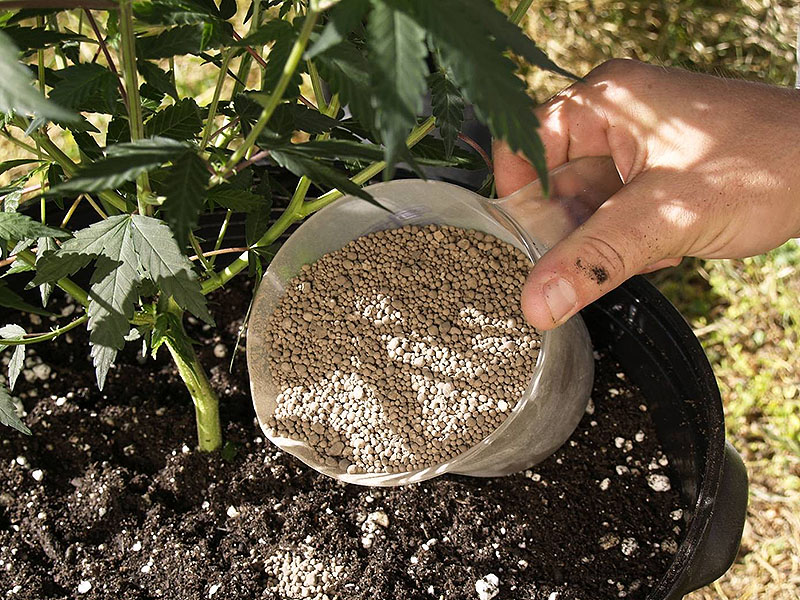
The main organic mineral fertilizers are lime, marl, gypsum and bone powder. Lime is part of all these substances. Simple burnt or caustic lime is a combination of calcium metal with oxygen; it does not occur in nature in a free state, but is obtained only by the action of high temperature on carbonic lime, which is very common in nature. When heated to white, carbon dioxide is released, and the so-called burnt lime is obtained. Pieces of burnt lime, when exposed to water, disintegrate into powder, and chemical compound water with calcium oxide, and the whole mass is significantly heated at the same time; the result is slaked lime, used in the construction of stone buildings. For technical use, lime is quenched with a significant amount of water in order to obtain a pasty mass; for fertilizer, it must remain in the form of a dry powder; quenching it to this extent requires 1 part by weight of water to 3 parts of lime. This powder is scattered over the surface of the cultivated soil in an amount of 100 to 200 pounds per tithe in 5-6 years and mixed with the soil with a rake if the cultivated area is not large. Hydrated caustic lime, under the influence of air and soil containing carbon dioxide, soon becomes carbonic and loses its alkaline properties, but nevertheless it is still able to act on humus parts of the soil and, in addition, serves as a nutrient for plants. Liming is applied to soils poor in lime, but in general it works successfully on heavy, wet, peaty, acidic and humus soils. Quite often, various limestone wastes are used as fertilizer, for example, limestone debris.
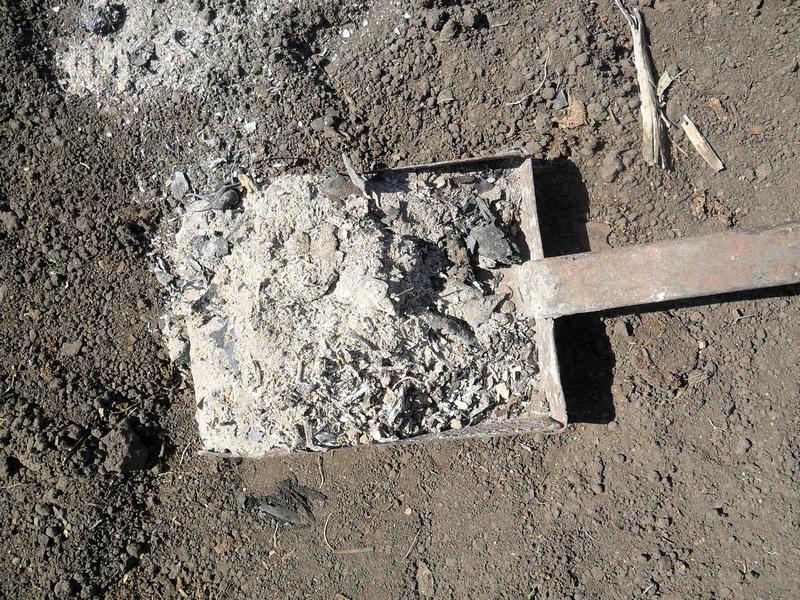
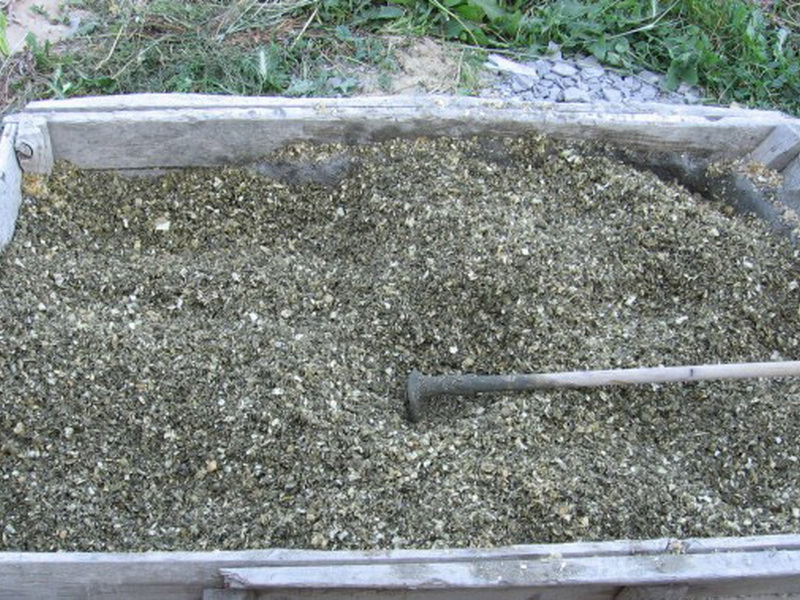
Marl. Marl is a natural mixture of clay with lime carbonate, containing more or less sand. Depending on which of these components prevails, it is called lime, clay or sandy marl. Sometimes it is difficult to distinguish marl from simple clay by appearance alone; to solve this problem, diluted acids, hydrochloric or nitric, are usually used. If during the processing of the sample with one or another acid gas bubbles are released, then this may be a sign that it contains carbonic lime, and the stronger the hissing, i.e., the release of gas, the more carbonic lime is contained. Marl is best taken out to the field in autumn or winter, as under the influence of low temperature and water it crumbles better. How much is needed for a known space of marl, it depends on the percentage of lime in it. If the use of marl is also meant to improve the physical condition of the soil, then they try to take out me
rgel is more clayey, while clayey, on the contrary, is a marl that contains more sand. Where marl is available nearby, it is much cheaper than lime, but in no way, due to its severity, does it endure such a long-distance transportation as, for example, burnt lime.
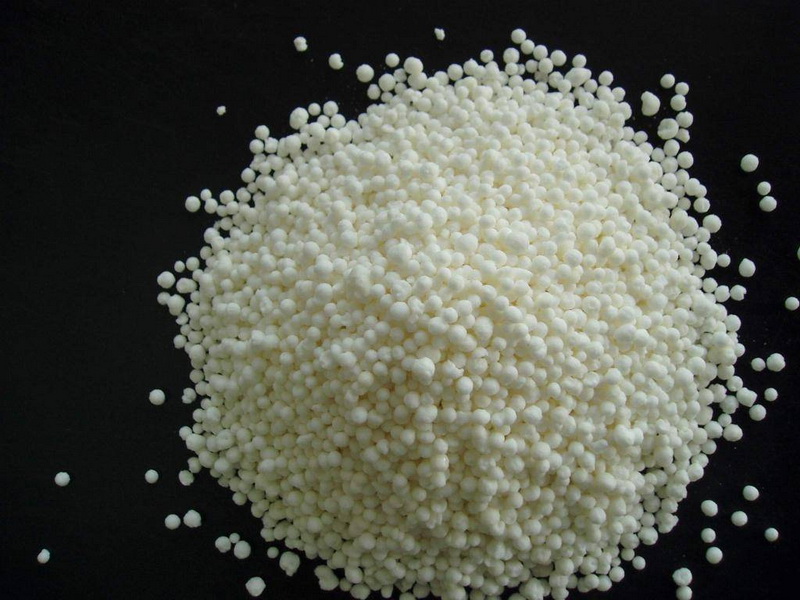
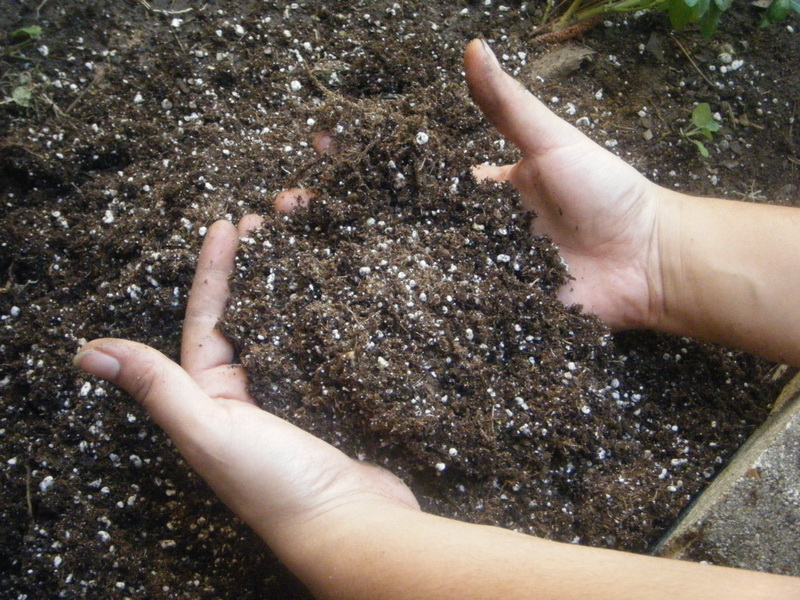
Gypsum. CaO. S03 + 2H20. Organic mineral soil fertilizers: gypsum or lime sulphate is a mineral found in nature, sometimes in very large deposits. He, like lime, is burned; this operation is undertaken for technical purposes and requires a comparatively lower temperature than limestone. Grinding takes place in mills, and not by quenching, as with lime. Gypsum is used by farmers in the form of a powder, which is sprinkled on young plants, especially moths, early in the morning, while they are still wet from dew. In horticultural culture, the use of gypsum is used only as an exception. It must, however, be assumed that it is applicable as a fertilizer for all cruciferous plants: cabbages, turnips, radishes and mustards, which all contain a lot of sulfur. Plastering of plants is remarkable in the sense that the leaves of plants are sprinkled with gypsum, which, as is known, cannot assimilate other substances besides gaseous substances.
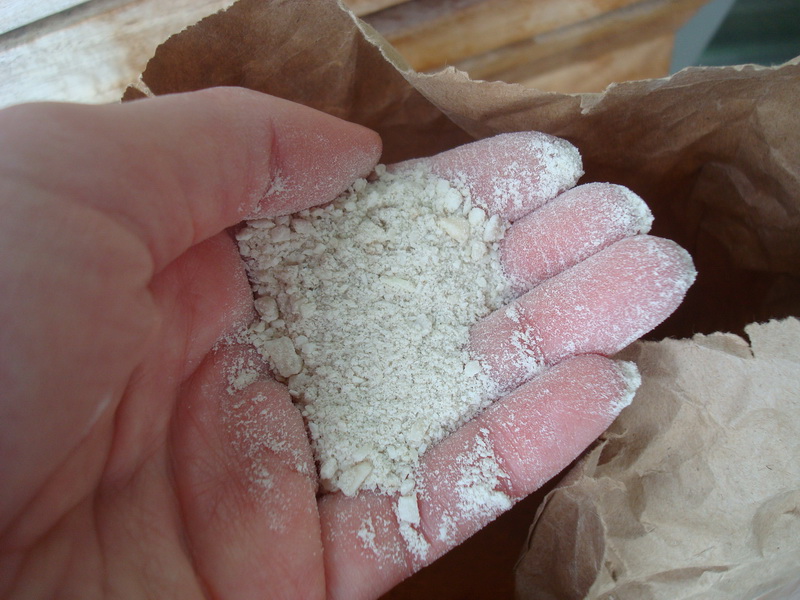
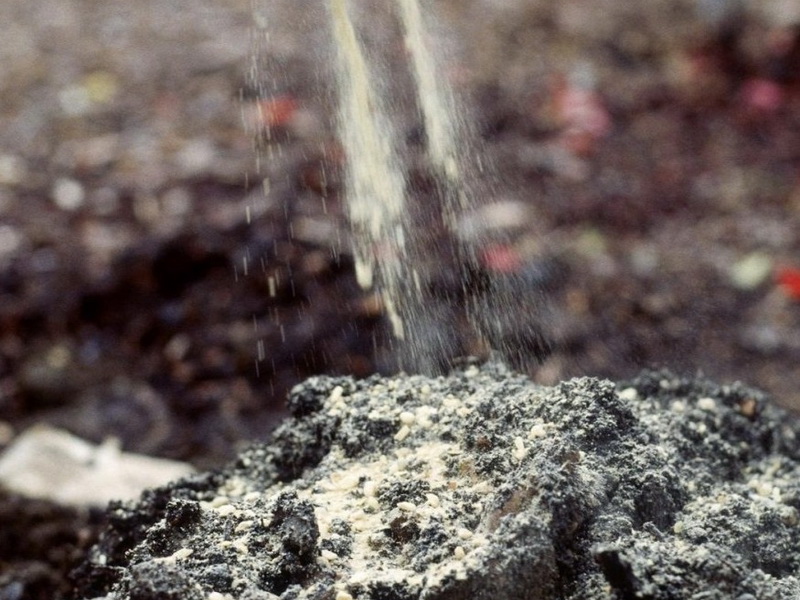
Bone powder or phosphate lime. Among other lime compounds, it is considered one of the most important nutrients for plants, but at the same time, it is one of the most expensive fertilizers. Bone powder is obtained by crushing or grinding raw bone factories; but such a powder contains an even greater amount of nitrogenous organic substances, the decomposition products of which, carbon dioxide and ammonia, also have a beneficial effect on plants.
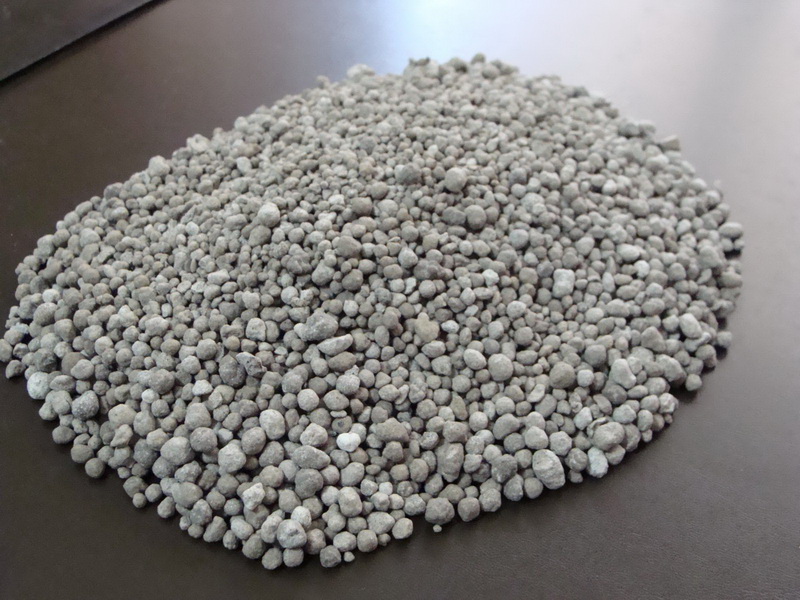
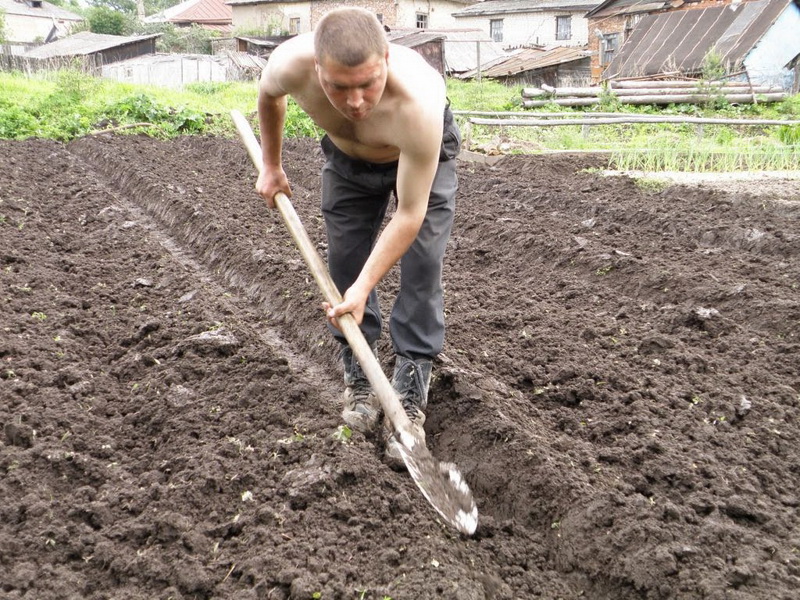
Superphosphate. Wanting to have a fertilizer that would act quickly, bone powder is treated with diluted sulfuric acid, and the so-called "superphosphate" is obtained. 10 pounds of vitriol oil is taken per pood of powder. Dilution of vitriol oil with water is carried out either in stone or wooden dishes, and vitriol oil should always be poured into water, and not vice versa. During the treatment of the powder with acid, in order to obtain a uniform fertilizer, the mass should be constantly thoroughly mixed with shovels, then allowed to cool and air dry. The treatment of powder with dilute sulfuric acid is best done in wooden vats. Bone powder does not consist of lime phosphate alone, but also contains a little carbonic lime, which, under the action of sulfuric acid, turns into gypsum; phosphate lime itself also decomposes, and sulphuric acid, taking away part of the lime from it, also forms gypsum, and insoluble phosphate lime turns into soluble, containing
yu less lime. Due to the absence of potassium in superphosphate, it is advisable to mix it in half or even with 2/3 of wood ash containing potassium carbonate.
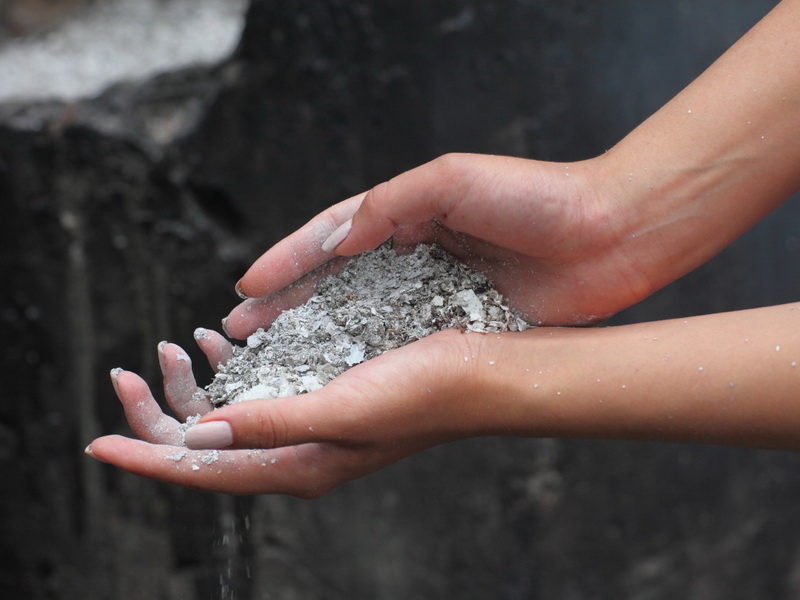
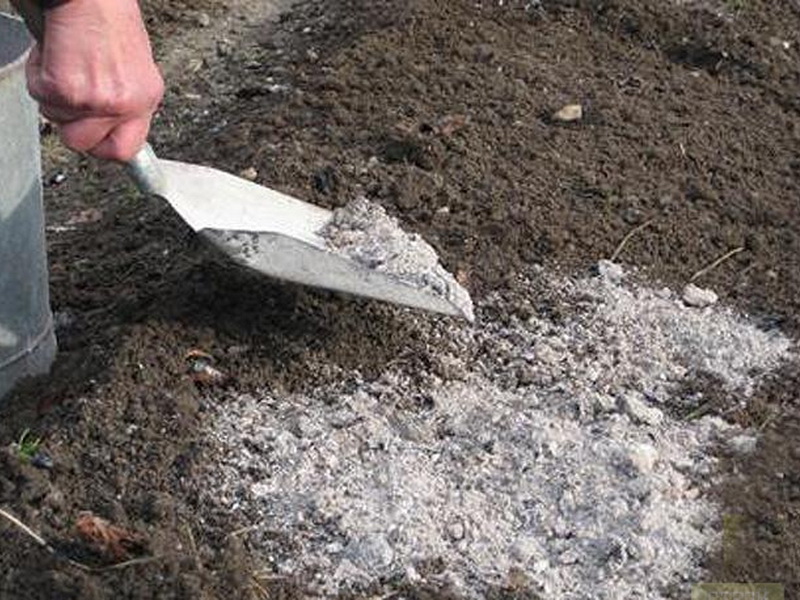
Steamed bone powder. This grade of bone powder is by-product when extracting glue and fat from animal bones. Steamed bones are an extremely fine, fast and strong powder that has an effect on plant growth.
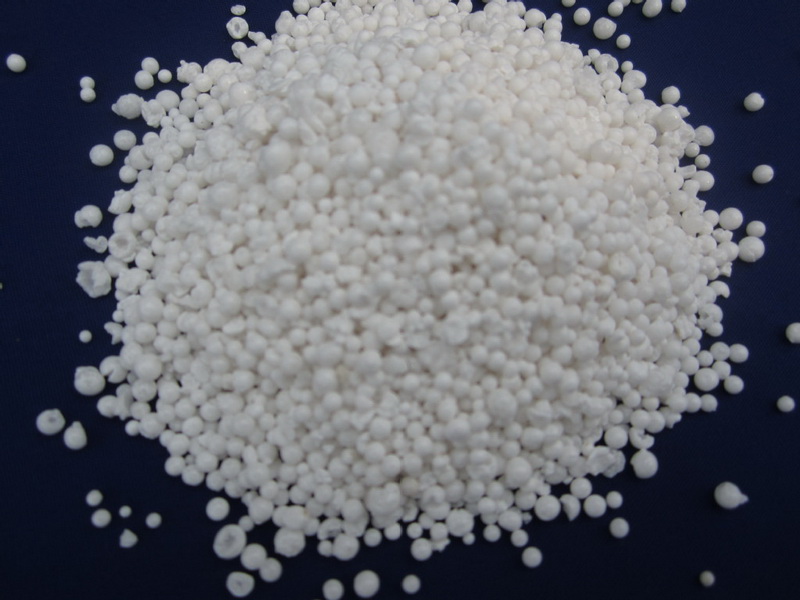
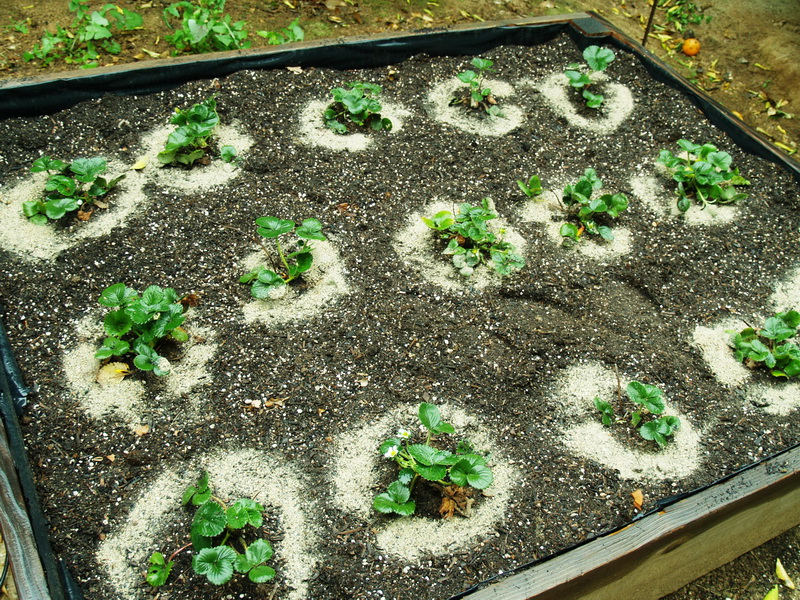
Phosphate, prepared at the factory from nugget, located in the Podolsk province, according to the publication, contains up to 40% lime phosphate. There are various reviews about it; in most cases, as it turned out, it did not give favorable results. For horticulture, at least, it is doubtful that it will be useful. Subsequently, it turned out that the enterprise for the manufacture of this powder was not successful.
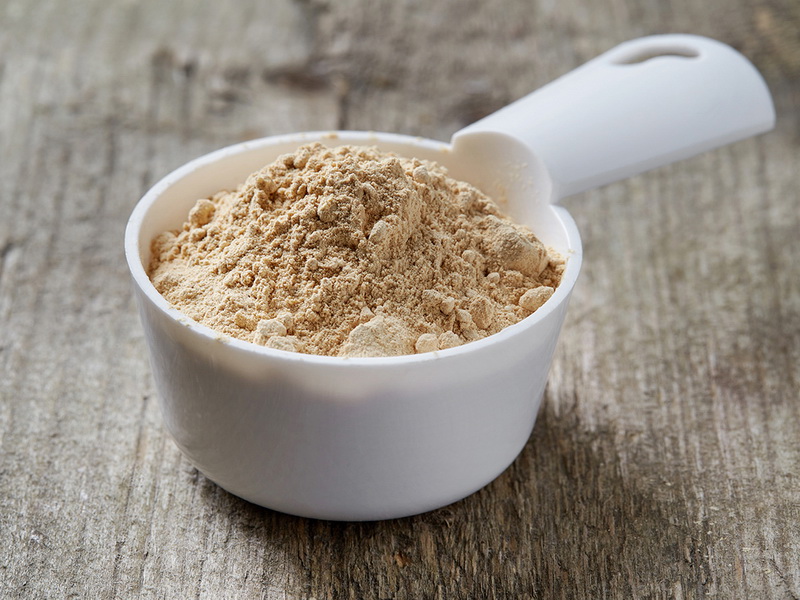
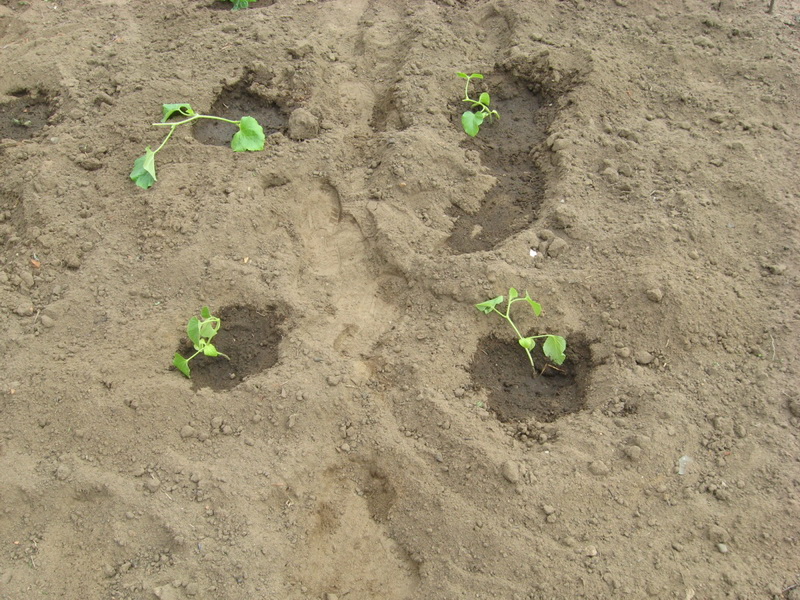
Glauconite or glauconite sand, found in many places in the middle provinces, is also a phosphorus compound and acts very beneficially on the growth and fertility of all plants, even those that do not tolerate manure fertilizer, such as, for example, coniferous trees and kashkar shrubs. Forest plants are always particularly luxurious development where the soil contains glauconite. There is no doubt that the introduction of organic mineral fertilizers into the soil also has a beneficial effect on fruit trees and berry bushes, although this has not yet been sufficiently tested in practice. Many owners have this valuable fertilizer in their possessions, unaware of its presence. The main feature is the greenish color of the granular-sandy mass, which is sometimes completely crumbly and mixed with chernozem, if it is on the surface of the earth, sometimes it sinters into a rather dense stony mass, especially if it is at a depth, and in this case requires mechanical crushing. The price of glauconite at the present time, due to the ease of obtaining it, is low, 4-5 kopecks. pood on the spot, in Ryazan. According to geologists, glauconite is the fossilized remains of lower organisms, similar to modern foraminifers. The grains are hard, slowly decompose and require mechanical crushing for a more successful action.
The Association for the Mining and Processing of Phosphorites and Other Fertilizers declares that glauconite sandstone contains:
- phosphoric acid - 10-12%
- potassium - 3-4%
- lime - 18-20%
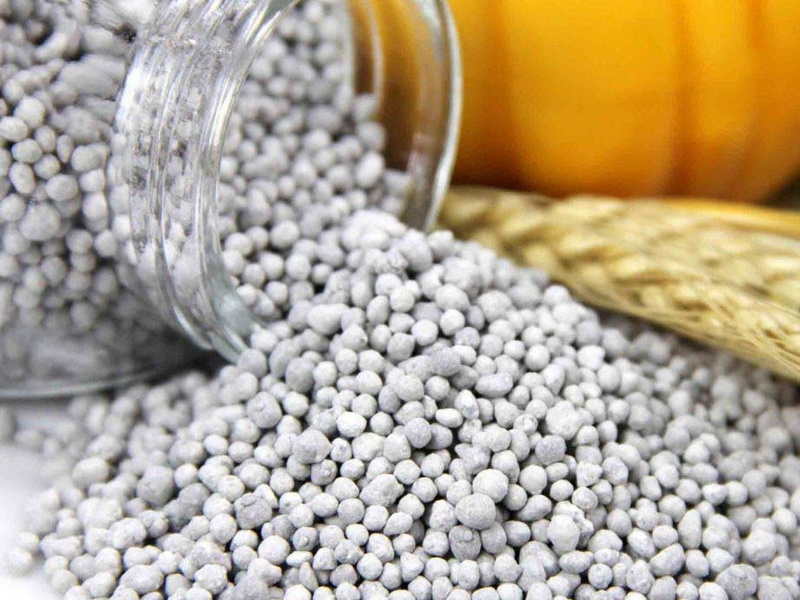
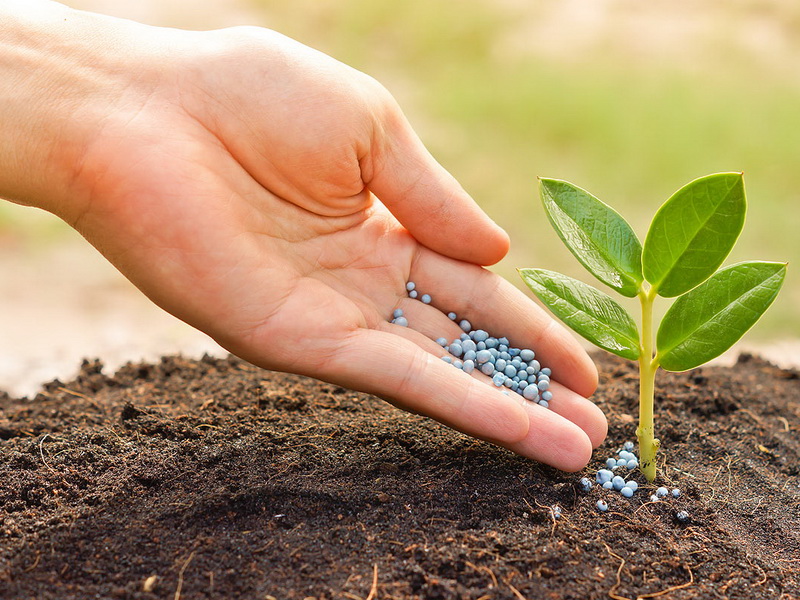
Chilean saltpeter or sodium nitrate NaN02 is brought to us from South America; now rarer, but before often met in trade. It is the only mineral fertilizer rich in nitrogen available in significant quantities. Its action on garden plants requiring nitrogen fertilizer is likely to be beneficial. According to information from Germany, chile nitrate proved to be very useful for fertilizing asparagus, as well as simple table salt or sodium chloride. Chilean saltpeter is used in crushed form, in the amount of one pood per 100 square sazhens = 24 items per tithe; it is used before sowing; you can also fertilize already sprouted and planted plants; under the influence of atmospheric moisture, saltpeter soon dissolves and is absorbed by the earth.
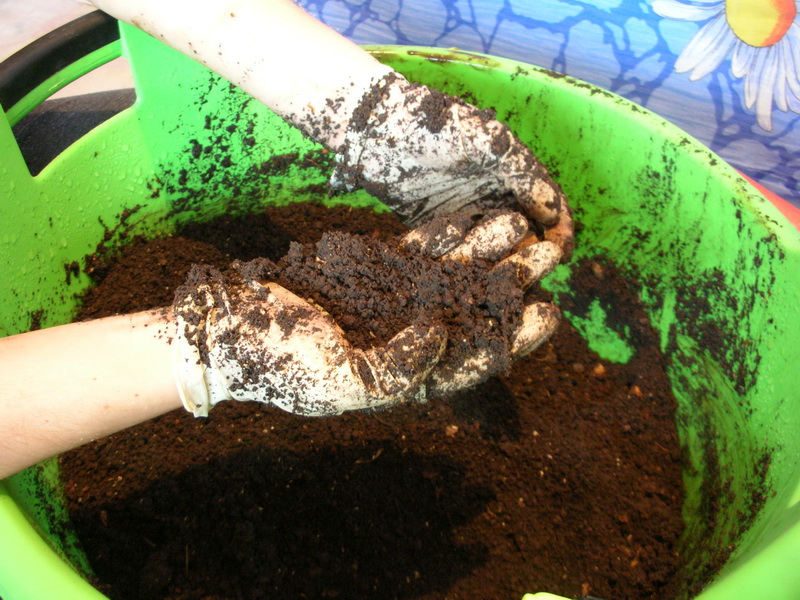
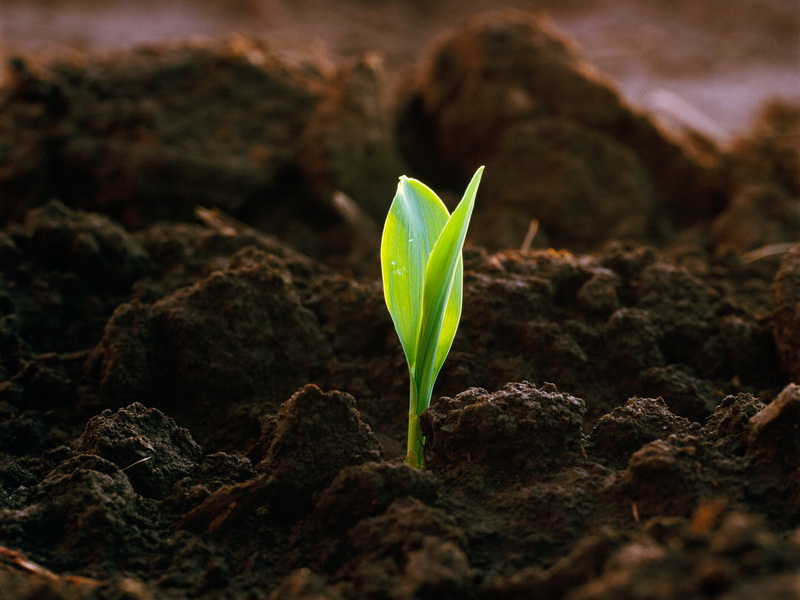
Stasfurt potassium salts mined in Prussia, near the city of Magdeburg. This salt is very dirty, the percentage of potassium chloride in it, which gives importance to this fertilizer material, is usually about 20%. In Germany, this salt is currently in great use and is sometimes brought to us. Its effect on garden and berry plants has not yet been studied, but it undoubtedly comes close in its action to the ashes of hardwood trees, which are also rich in potassium, and therefore it is possible to assume that it can serve good fertilizer for fruit trees and shrubs, grapes, potatoes, tobacco and other plants requiring a significant amount of potassium. Two types come across in trade: potassium chloride KCI and sulfate K2S04.
Types of liquid organic fertilizers for plant nutrition
Liquid organic fertilizers- this is a fertilizer watering, which gives the plants a ready-made nutrient solution.
There are various types of liquid fertilizers: some strong fats, as well as animal urine or slurry, are often applied in the form of an aqueous solution for watering plants, which require moisture along with the delivery of nutrients to them. Such top dressing with liquid fertilizers is applicable to all plants in moderation, even to those on which fertilizer with simple manure is harmful. All types of liquid fertilizers must be prepared 1-2 weeks before use and the grounds should be shaken daily with water so that decomposition and mixing with water is as complete as possible. Insufficiently decomposed, as well as too concentrated fertilizer liquid can produce very bad influence on plants, especially if it is given more than the plants are able to absorb. This influence is revealed by the fact that the root lobes die off, and the foliage curls up and turns black at the edges. Liquid fertilizer for plant nutrition is mainly used at an early age of plants, with the development of roots, leaves, stems and flowers, also in the first period of fruit and seed formation; when the fruit ripens, watering is useless or even harmful.
Successful fertilization with liquid manure depends a lot on the condition of the soil, especially on the degree of its moisture: in rainy and cloudy weather, with cool air and moist soil, you can safely use liquid fertilizer in in large numbers. If, on the contrary, the weather is hot and dry, with heated and dried soil, then it does not interfere with being careful, otherwise liquid organic plant fertilizers can cause the above phenomenon in more sensitive plants. A precaution that does not interfere with this is to pre-wet the earth with water or use a less condensed solution.
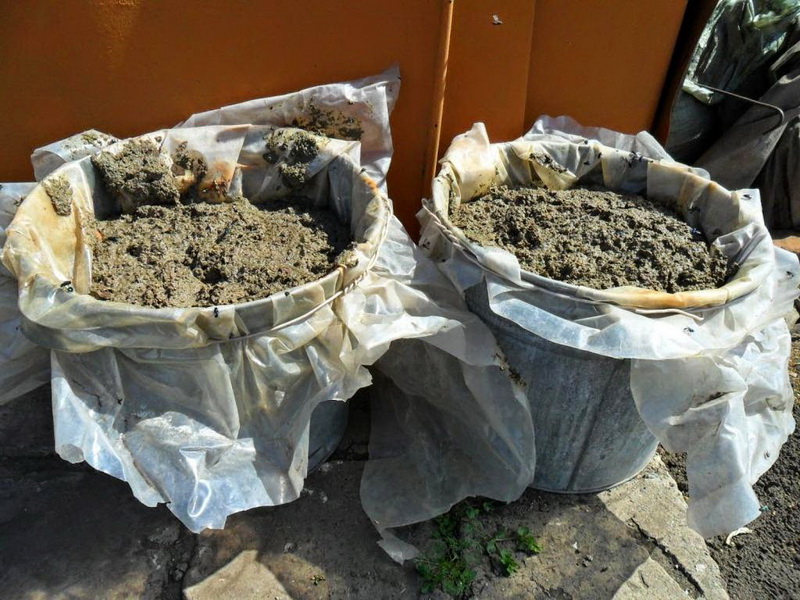
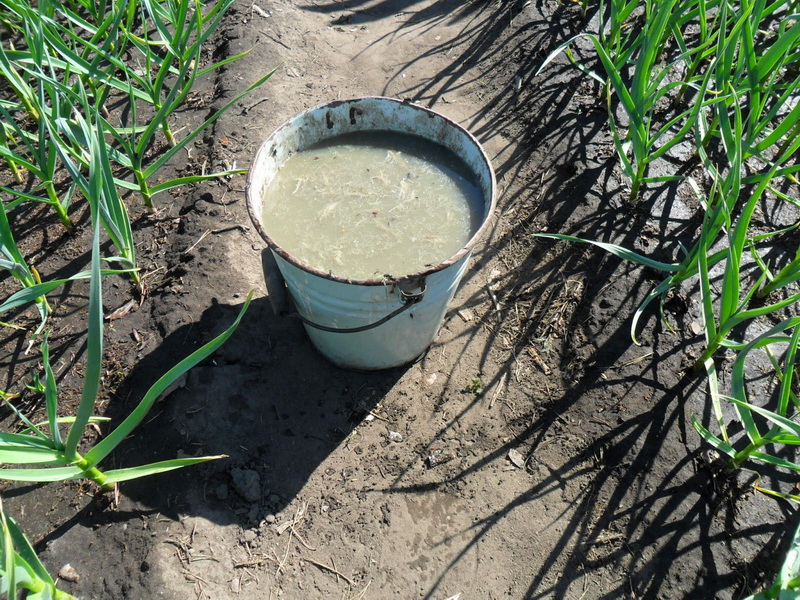
Fertilizer watering from latrines. The fertilizer liquid, which is sometimes used in abundance for watering garden and berry plants, consisted of a water-closet liquid flowing underground and collecting in several small reservoirs, from where it was taken directly to work. This solution itself is quite liquid, and therefore does not require dilution with water. On large plants, such as cabbage, pour 1/2 bucket each, 1/4 bucket on a strawberry bush or seller, and 1/2 tub on hops. In order for the earth to be immediately saturated with such a mass, it is necessary to first dig a depression near the plant corresponding to the volume of liquid. This recess remains open if secondary watering is meant, otherwise it is closed immediately to prevent moisture from evaporating; in an open hole, usually, after a few days, numerous new root lobes are formed. The effect of this liquid on the growth of the above-ground parts of plants is also soon revealed. If the contents of simple latrines are used for fertilizing watering, then it is necessary to dilute it with water and subject it to the so-called "fermentation" before use for watering, and if only one fertilizing purpose is meant, then the masses should not be turned into a liquefied state, which sometimes, of course , erroneously, do.
The slurry, consisting of the urine of animals and an aqueous extract of excrement, flowing from stables and dung-pits, is also a very fruitful liquid, which even far exceeds the effect of the dung itself; it is also highly applicable for compost improvement and fertilization. Since this liquid for the most part disappears completely uselessly, it is also advantageous to use it as a fertilizer watering, first diluting it with a double volume of water and leaving it to decompose somewhat. IN fresh it is quite caustic and cannot be applied without harming the plants.
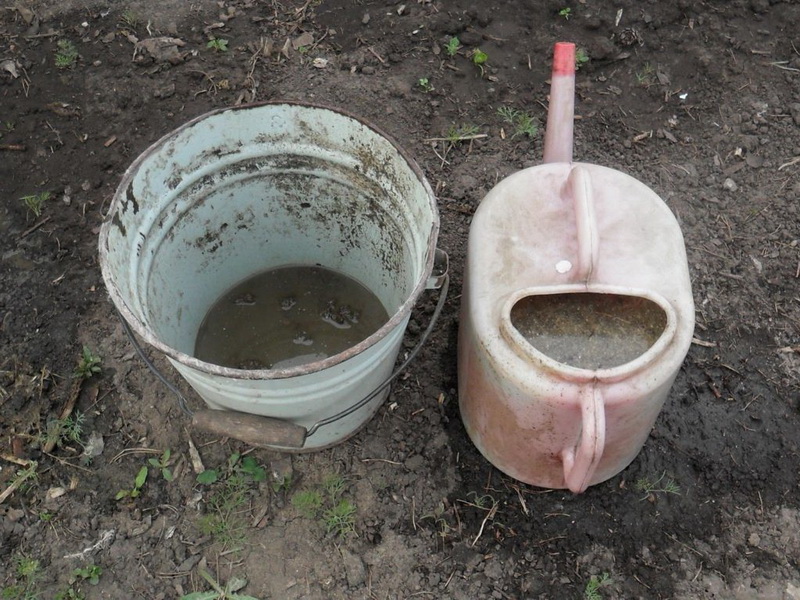
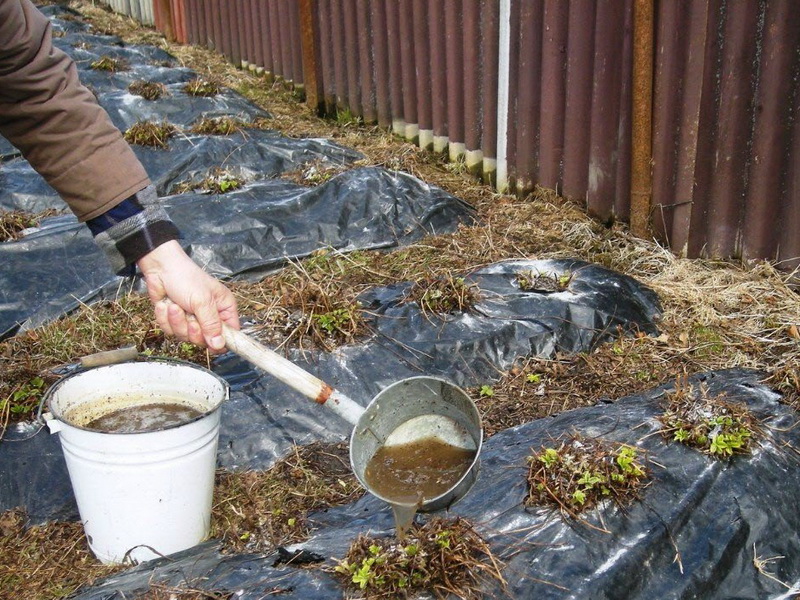
Bird droppings. By the name of bird droppings are meant pigeon and chicken excrement, which act even more strongly than slurry; they are almost completely dry and therefore require a considerable amount of water to liquefy. Dissolution and fermentation is rather slow, at least 2-3 weeks; the latter goal is achieved much faster if the already prepared solution is mixed in half with fresh. This period is also reduced with an increase in air temperature or with the addition of hot water.
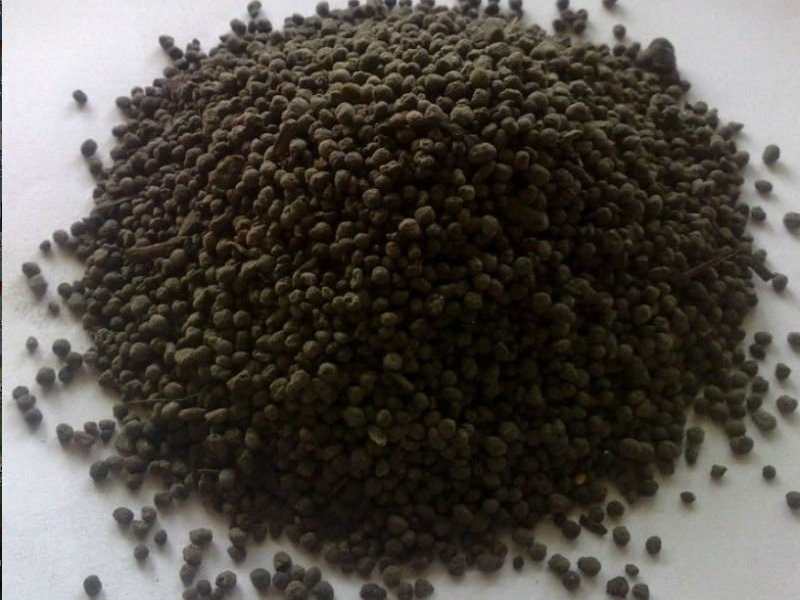
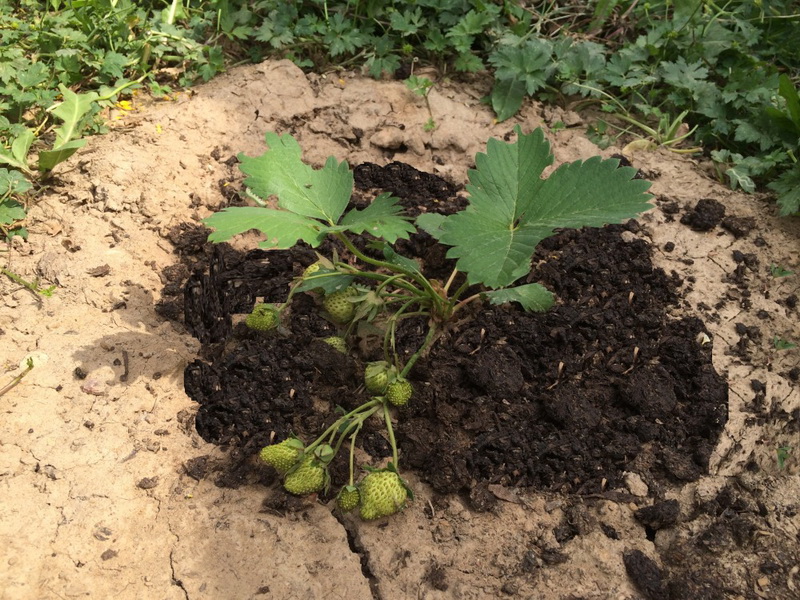
Guano it is also often used as a fertilizing watering and requires, as the most concentrated of all fertilizers, a significant amount of water, from 60 to 80 volumes per 1 volume of guano.
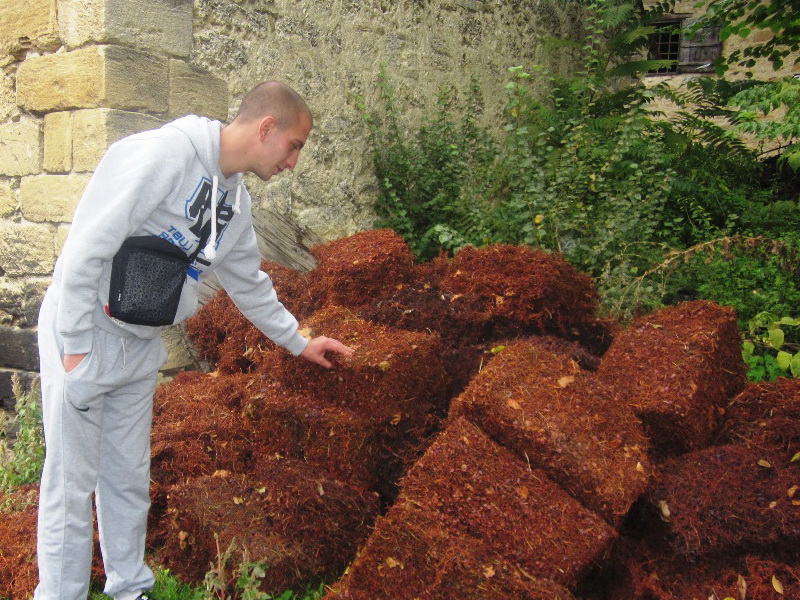
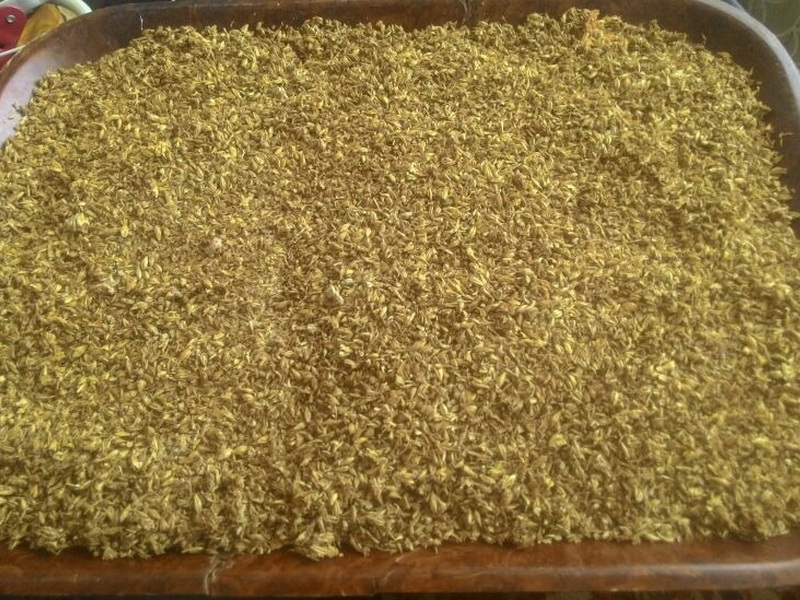
Cakes or pomace. Under this name, solid masses, consisting of the dry matter of oilseed seeds, remaining after squeezing oil from them at oil mills, go into trade. They are too expensive for fertilizer, up to 1 rub. pood, and are used as an excellent fodder, but sometimes, diluted in water, as a fertilizing watering. Mostly the remains of cruciferous plant seeds are used, which are rich in nitrogen and contain a significant amount of compounds that include sulfur.
Horn shavings act very strongly on plant growth in the form of an aqueous solution, but decompose somewhat slowly; at the same time, an unbearable stench spreads, which, however, is noticed during the dissolution and decomposition of other fertilizing substances. A heavy smell usually comes from the evaporation of gaseous stinking decomposition products. The loss of ammonia in this case greatly reduces the fertilizing value of the liquid and, therefore, it is beneficial to prevent this loss. To retain ammonia and at the same time to destroy the stench, various means are proposed, but practice still either makes little use of these means, or even considers them harmful, and most importantly, expensive.
The means proposed and sometimes used for the binding of ammonia are as follows:
- The most valid is vitriol oil in small quantities, about a glass per barrel of fertilizer, and it is added little by little.
- A solution of ferrous sulfate, i.e. ferrous sulfate, is also used in small quantities, but it is added more than vitriol oil.
- Gypsum or lime sulphate in as fine a powder as possible.
- Lime is simple, carbonic, in the presence of which ammonia under the influence of atmospheric oxygen turns into nitric acid.
Compost pile as organic fertilizer
Compost, which is obtained, at least in gardening establishments, consists mainly of substances plant origin. All waste from tuberous, legumes and other plants is collected in piles located in a convenient place. All kinds of other substances that have a fertilizing power also enter the compost fertilizer, for example, aquatic plants obtained when cleaning ponds, sawdust, small chips, brushwood, branches obtained from cutting hedges, the corpses of dead animals, wood ash, soapy water, for the sake of the potash contained in it, lime residues, etc. The main mass of compost obtained in vegetable gardens is always weed grass, weeded out from vegetable and berry ridges. When turning weeds into a fertilizer, it is very important to watch that their mature seeds do not crumble, which remain intact in the compost and subsequently clog the soil that is fertilized with such compost. Quinoa, wild millet, amaranth, annual nettle, wood lice, nightshade and other annual weeds are especially harmful in this regard. To freeze ripe or almost ripe weed seeds entering the compost heaps, one has only to put them in batches in a shock, and they get very hot and, as a result, lose their vitality. A compost heap as an organic fertilizer is not a complete replacement for minerals.
It is clear that compost of this composition does not represent a concentrated fertilizer, but simply fertile, loose vegetable soil, if it does not include a more effective fertilizer substance, such as slurry, manure from latrines, slaughterhouse refuse and similar animal residues.
Beginner gardener, gardening for only two years. I do not yet know the features of caring for fruit trees and berry bushes. Here "US" writes that now it is necessary to apply fertilizers for these plants. How should they be entered correctly? I do not know. In the spring, for example, I evenly scattered humus and mineral fertilizers under the trunk circles, and then dug up the soil. In my opinion, for young fruit trees and berry bushes, this method of fertilizing the soil should be quite acceptable. But further with the increase in the age of such plants, some other method of fertilizing will be required. I ask you to popularly tell about the features of fertilizing in the garden.
AND I. Gryaznov, Yekaterinburg
Before applying any fertilizer to the soil in the garden, any gardener - both beginner and experienced - must determine what is the best way to do this. The choice of one or another method is influenced by many factors on which the effectiveness of fertilizer depends. The main of these factors are the interaction of fertilizers with the soil, the placement of the root system, the content of the soil in the garden, the amount of rainfall and the availability of irrigation. Let's take a brief look at each of the factors.
Phosphorus, potash and some forms of nitrogen fertilizers introduced into the soil undergo complex transformations before entering the plant. So, soluble phosphorus fertilizers (superphosphate), reacting with the soil, turn into insoluble forms that are inaccessible to plants, which remain at the places of application. Such fertilizers are more accessible to plants (especially on our acidic soils) than they come into contact with a smaller amount of soil particles. Conversely, sparingly soluble phosphates (phosphate rock) become more available to plants if they are well moved with the soil. All potash fertilizers are easily soluble in water. Potassium from them is absorbed by the soil. The more acidic the soil, the less potassium is absorbed. Soils with a neutral and alkaline reaction not only adsorb potassium, but also fix it in a non-exchangeable form. Nitrate forms of nitrogen fertilizers (for example, sodium nitrate) are not absorbed by soil colloids and are washed out into the deep layers. Nitrogen of ammonia fertilizers (for example, ammonium sulfate), being adsorbed in the soil, moves to insignificant distances from the place of application. However, on light neutral or alkaline soils with shallow incorporation, nitrogen losses are possible as a result of ammonia volatilization. Ammonia can also be lost from urea applied to the soil surface, as it quickly hydrolyzes.
Plants absorb nutrients only when sufficient fertilizer contact with the roots is ensured. Therefore, fertilizers must be applied to those layers of soil where the bulk of the roots are located. The roots of fruit trees go far beyond the crown projection. Their main mass is located at a depth of 10-55 cm on less fertile soils and 20-80 cm on fertile soils. Thus, the weak mobility of phosphorus and potash fertilizers and the relatively deep occurrence of the roots of a fruit tree, and even a berry bush, actually determine the choice of one or another method of application.
The following methods of fertilizing the garden are currently the most common.
Surface spreading with incorporation into the soil. This method is most appropriate for applying organic fertilizers, which not only provide fruit and berry plants with nutrients, but also improve the physical and chemical properties of the soil and increase its fertility. They should be as evenly distributed as possible over the surface of the soil. In this way, all solid nitrogen fertilizers (various nitrates, urea) can be applied. After transformations, ammonia and amide nitrogen becomes nitrate and penetrates deep into the soil, where it comes into contact with the root system of the plant and is absorbed by it. In practice, both phosphate and potash fertilizers are also applied to the soil surface. However, this method is not acceptable for all soils and forms of phosphate fertilizers. On acidic soils of light mechanical composition, for example, phosphorite flour can be applied.
Surface spreading without incorporation. With sufficient moisture or irrigation best system soil content in the garden - soddy-humus, which consists in growing seeded cereal grasses with their frequent mowing and leaving the green mass in place as mulch. With this system, several options for fertilizing are possible. A mixture of nitrogen (urea), potash and water-soluble phosphorus fertilizers is scattered in late autumn or early spring over the surface of the soil covered with vegetation. Due to the mobility of phosphorus and potassium with a high content of organic matter and the presence of earthworm moves, these elements become available to the roots of fruit and berry plants. You can scatter nitrogen fertilizers over the entire surface of the soil, and phosphorus and potash fertilizers can be applied to wells along the periphery of the crown at the rate of one well per 1 sq.m. If the trunk circles are cultivated, and the aisles are green, phosphorus and potash fertilizers can be applied under the trees in a black fallow and planted in the soil, and nitrogen fertilizers can be scattered over the entire surface of the garden.
Deep focal (local) application. With this method, phosphorus and potash fertilizers are introduced into wells, holes, grooves, furrows, pits, niches, creating pockets of increased concentration of nutrients near the roots. Less contact of fertilizers with the soil reduces the binding of phosphorus and potassium, they are better used by fruit and berry plants. But it must be remembered that deep focal application may be useless if sparingly soluble forms of phosphorus fertilizers are used or if the soil is not able to fix a significant amount of phosphorus and potassium (for example, soils of light mechanical composition).
How and at what depth should fertilizers be applied? Amateur gardeners usually apply organic and mineral fertilizers to the bottom of the grooves, which are made along the periphery of the plant crown to a depth of about 40 cm. But this method is quite laborious, in addition, plant roots are damaged when digging grooves. It is much easier to apply liquid or solid mineral fertilizers into holes, wells made with a shovel, crowbar or a special device. In this case, the roots of trees are damaged little or not damaged at all. Wells can be made with little physical effort, if you use a specially made very simple device in the form of a pointed metal pin about 2 cm in diameter and about 110-120 cm long with a handle about 40 cm long welded to its blunt end from the same metal. Having stuck the pin into the ground, wells 40-45 cm deep are made in a circular inclined motion. 500-600 g of a mixture of mineral fertilizers are placed in one such well. Wells are made in the trunk circle in the amount of one or two per 1 sq.m. Sometimes a mixture of organic and mineral fertilizers is laid in pits 50-60 cm deep, made with a shovel, creating a kind of "pantry fertilizer". The roots, having reached the pits, branch intensively and use nutrients for many years.
Layered application. On soils with a large humus horizon, the roots of fruit trees are located deeper as they move away from the bole. With this in mind, fertilization into the furrows should be done at different depths (in layers): closer to the trunk - shallower, and as you move away from it - deeper. Fertilizers should also be applied at different depths and into wells and pits. At the same time, gardeners should take into account that in different periods of the growing season, depending on moisture, the root system remains active either in more superficial or deeper layers of the soil.
Application of fertilizers in liquid form. Solutions or suspensions of fertilizers are introduced into the soil at natural or elevated pressure. In amateur practice, solutions and suspensions of fertilizers are poured into holes or pits by gardeners. This method of applying fertilizers allows you to very quickly apply them to the roots, for example, with a symptom of a lack of any element or in dry weather, when fertilizers do not penetrate deep into the soil.
Application of fertilizers with irrigation water. Fertilizers can be applied with irrigation water so that they better penetrate into the area where the bulk of the roots are located. To do this, fertilizers are pre-dissolved in water, and then the container with the fertilizer solution is connected to the irrigation main. In the same way, containers with fertilizer solutions can also be connected to sprinkling devices, which at the same time carry out foliar feeding of plants. But this method of fertilizing for an amateur gardener is still very complicated. More in a simple way is first the preliminary watering of the soil, then the application of fertilizers in liquid form and then the final watering.
In this answer, I tried to popularize all the most famous methods of fertilizing the garden, acceptable to any amateur gardener.
Soil fertilization is an important process for the active growth and development of plants and, accordingly, obtaining a large and high-quality crop. Fertilizers are a set of substances that are used to improve the condition and properties of soils. They feed the plants with the necessary chemical components.
There are the following types of fertilizers:
- and (by origin);
- solid and liquid (aggregate state);
- direct action and indirect (mode of action);
- basic, presowing, top dressing, intrasoil, surface (method of application).
Soil types:
- sandy;
- clay;
- sandy;
- loamy;
- podzolic;
- peat-marshy;
- chernozem.
Clay soil fertilizer
Clay soils are soils that contain 40-45% pure clay. They are characterized as sticky, raw, viscous, heavy, cold, but rich. Clay lands are slowly saturated with water and retain it strongly, very poorly and slowly let water into the lower layer.
Therefore, plants growing on this type of soil practically do not suffer from drought. The viscosity of such soils with strong moisture makes it difficult to cultivate the land, as well as with complete drying - the earth turns to stone, but it cracks strongly, which contributes to the rapid penetration of water and air into the cracks.
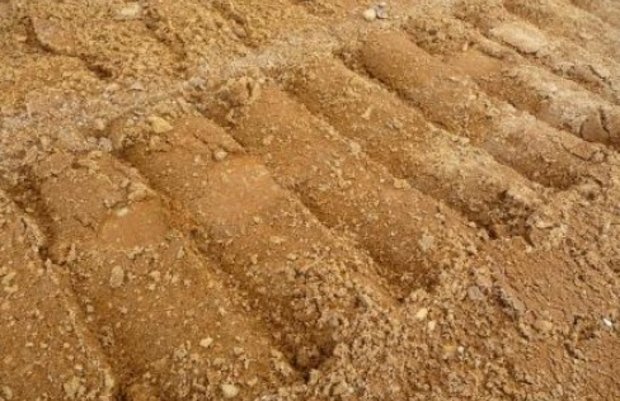
Therefore, the heaviest soils for cultivation are clay. To process them, it is necessary to wait for the state when the soil is no longer sticky, but not yet dry. To prepare clay soils for planting plants, it is necessary to make a sufficiently large amount of effort.
The first thing to do is to improve and fertilize the clay bed. So that the water does not stagnate, it is necessary to fill up the lowlands and level the hills, that is, level the surface. Organic top dressing is considered the first step towards the cultivation of clay soils. They are included in autumn period when the crop is harvested. If land development is just beginning, it is necessary to add 1.5 buckets of organic matter per square meter of clay soil.
Sandy soil fertilizer
Sandy soil is loose, devoid of viscosity earth, in which up to 50 parts of sand fall on 1 part of clay. You can check if the type of soil in your area is sandy. Try rolling a ball or flagellum. If it turns out to roll a ball, but there is no flagellum, then this is sandy loamy soil, and if neither a ball nor a flagellum is formed, then the type of this earth is sandy. 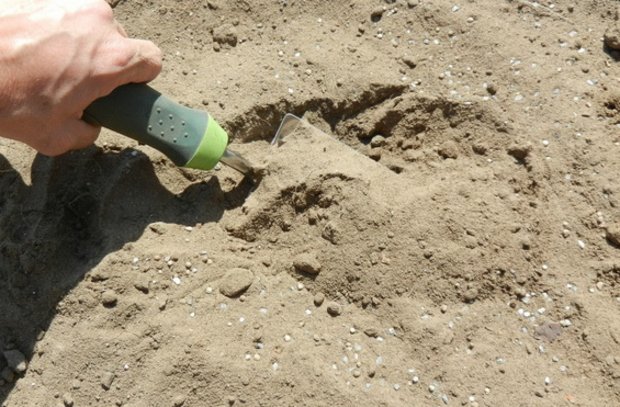
The problem with sandy soil is poor moisture retention, therefore, without improving it, you will not only not achieve a high yield, but also normal plant growth. Evaporating moisture carries away most of the nutrients. The sandy earth quickly cools down and heats up just as quickly, so in winter the plant will die from the cold, and in summer - from burns of the roots and due to the death of the root system.
To improve soils, it is necessary to increase their viscosity. To do this, use organic top dressing. Use will help improve sandy soil. Two buckets of manure should be used per square meter. Such manipulations must be carried out within three years.
Cheaper but less effective method improve sandy soil - fill it with either peat. One bucket of fertilizer should be used per square meter. As well as clay soils, sandy soils are improved by sowing the territory with legumes. It is necessary to dig along with the plants, they will help increase the viscosity. 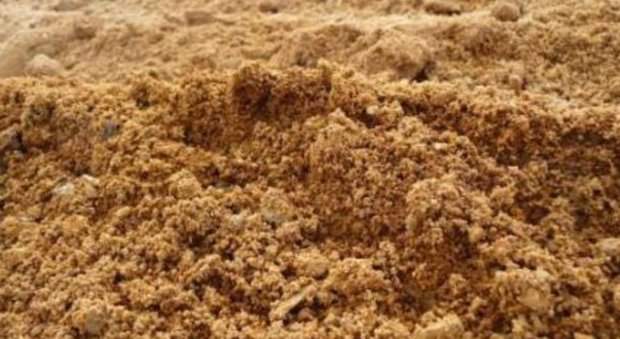
More cost and effort you will need to make to improve the soil with clay. To do this, it is better to buy powdered dry clay. If you spend money and apply four buckets of such fertilizer for the soil, then in two seasons you will be able to turn sandy soil into sandy loam.
When the land improves, every summer must be spent, thanks to which the water will not evaporate so quickly. Organic fertilizers are applied to the sandy soil in autumn, in particular, peat and manure. It is better to apply mineral and some organic fertilizers for sandy soil in the spring; if applied in the fall, the water will wash out most of it.
As a fertilizer for acidic sandy soils use. It contributes to deoxidation, and on neutral soils it is a source of potassium and phosphorus. It costs 200 g per square meter to add ash, do not bury it, but simply scatter it. Do not apply ash with nitrogen fertilizers - it will lose its properties.
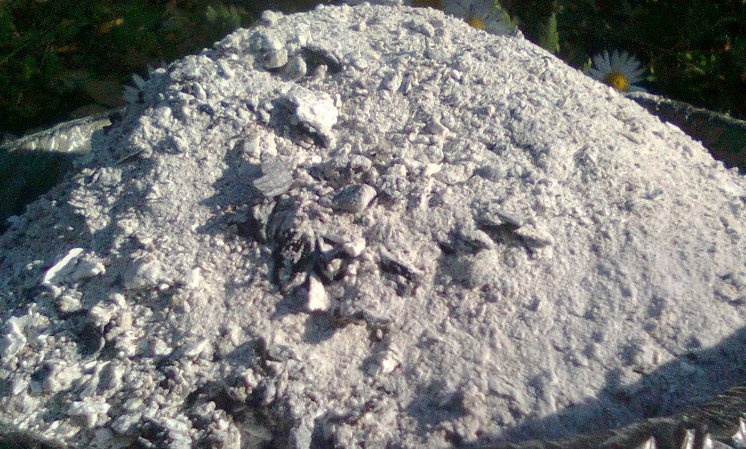
Time interval between applications various kinds fertilizer should be at least a month, and it is better to use nitrogen fertilizers immediately before sowing / planting plants.
Mineral fertilizers on sandy soils must be applied carefully, as they immediately get to the roots of plants and can burn them. It is better to fertilize more often, but with a lower concentration.
The type of top dressing, the amount and frequency of application depend on the plants you plan to plant. On sandy soils, legumes, gourds and gourds grow well.
Fertilizer sandy soils
Sandy loamy soils are soils in which 7 parts of sand account for 3 parts of clay. They are characterized by the fact that they have a crumbly structure, they hold moisture moderately. Unlike sandy soils, sandy soils are favorable for growing plants.
Sandy loamy soils are breathable, retain mineral fertilizers, do not allow them to wash out, and can retain water. Peat and manure are well suited for top dressing, they are brought in in spring or autumn during land cultivation. The application of mineral fertilizers, as in the case of sandy soils, is carried out in the spring, in small portions, but often. 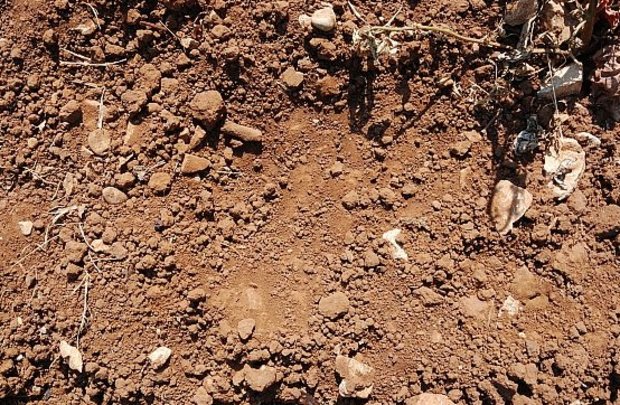
Sandy loamy soils are quite fertile and suitable for growing most plants. Garden crops, most fruit and berry plants, grain crops can be grown on sandy loam.
Loamy soil fertilizer
Loamy soils are those that in their composition contain most of the clay and less - sand. They are considered a combination of clay and sandy loam type.
Loams are separated for types:
- lungs;
- medium;
- heavy.
Loamy soils are best suited for planting horticultural and horticultural crops. They are easily ventilated, well heat and moisture permeable, easy to process. Loams are rich in minerals and elements, contain a large amount of nutrients that are constantly replenished by microorganisms that live in the soil.
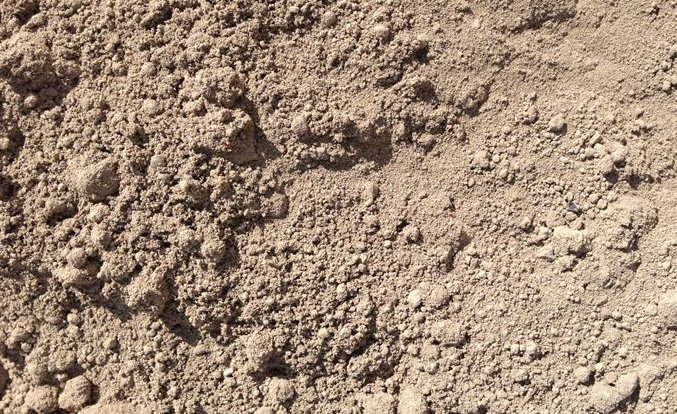
Despite the natural content of microelements, loamy, as well as sandy loamy soils need top dressing. Manure and compost are suitable for application, which are recommended to be used in autumn for processing loam.
Also, the introduction of additional organic and mineral fertilizers should be carried out depending on the planned sowing or planting.
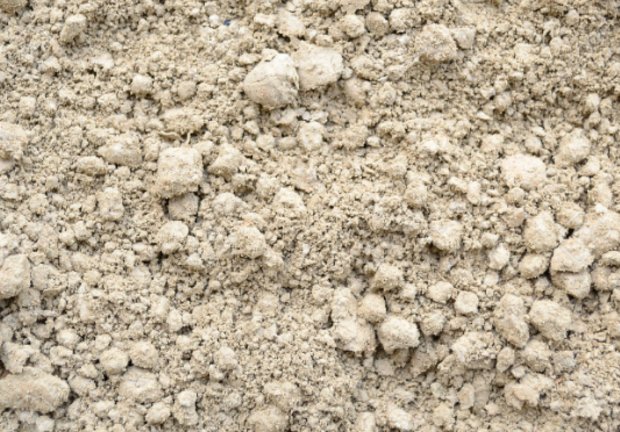
It can grow on heavy loams. Light loamy soils are suitable for growing and. After cultivation, such plants for loamy soils as legumes, root crops, which are very demanding on the composition of the soil, are able to develop normally.
Fertilization of podzolic soils
Podzolic are soils characteristic of. They are formed under the influence low temperatures and high humidity.
Did you know?This type of soil got its name from the words “under” and “ash”, that is, similar to ash.
This type of land is considered the most unsuitable for vegetable growing, as it has an acidic reaction and low fertility. Consider which fertilizer is best for acidic podzolic soils.
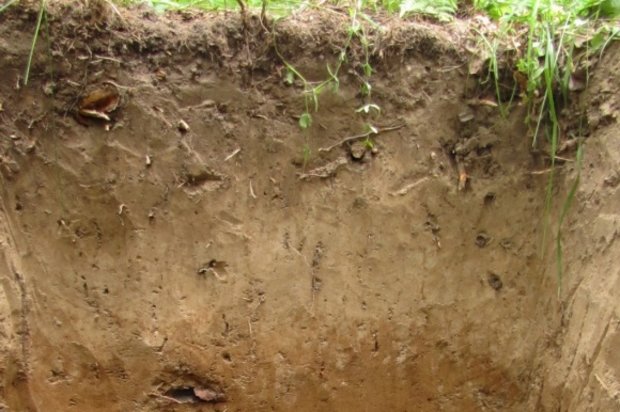
When using these soils for planting plants, it is necessary to reduce the acidity by liming. To do this, 0.5 kg of lime is applied to 1 square meter of land. The specified amount of lime is used 1 time in 8 years. Lime application should be carried out in the fall, while using any other top dressing is not necessary.
If organic or mineral fertilizers are added along with lime, the effect of the latter will be minimal, since lime reduces the effectiveness of other fertilizers. Therefore, lime is used in the fall, and organic and mineral top dressing in the spring.
How to use fertilizers for acidic soils:
- manure must be applied in early spring for cultivation;
- ammonium top dressings (, ammophoska, ammonium chloride) are also applied in the spring;
- fertilizers are applied in the fall.
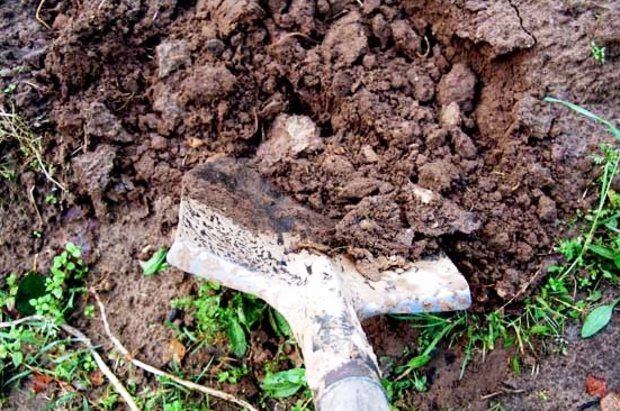
Plants are sensitive to acidity: when grown on highly acidic soils, the soil needs liming.
Thus, almost all plants need to add lime to the soil in order to properly absorb nutrients.
Fertilizer of peat-marshy soils
Peaty-marshy soils are a type of soil that is formed with constant strong waterlogging by precipitation or groundwater.
Peaty-marshy soils, consisting of organic substances, are rich in nitrogen, which is rarely found in a natural form available to plants.
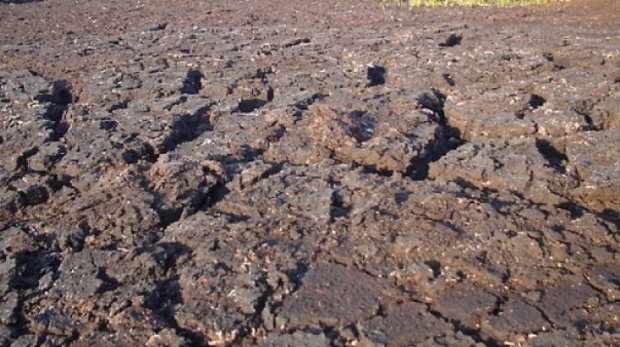
But at the same time there is a deficiency of potassium and a critical shortage of phosphorus. Such soils do not conduct heat well, peat heats up slowly. Consider what fertilizers should be applied to peat-marshy lands.
Improvement of peatlands needs to be done in two directions:
- creation of conditions for normal life by introducing manure, sawdust, compost;
- the introduction of missing elements, such as potassium and phosphorus, to ensure the normal development of plants.
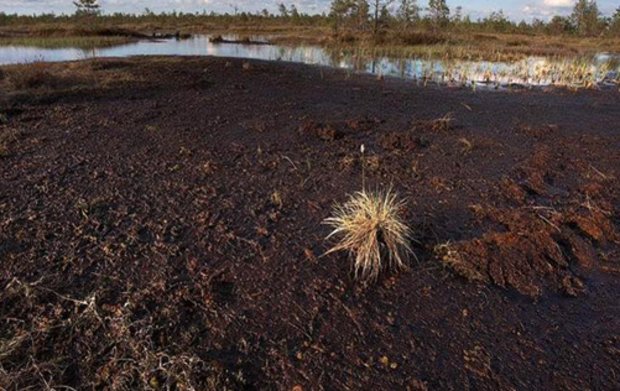
Most fruit trees do not tolerate constant stagnant water, so they must be planted on a hill or on sprinkled land. The system of measures for swampy lands has proven itself well, which allows you to grow crops, vegetables, and fruit and berry crops.
Chernozem fertilizer
Chernozem is a type of land that has a dark color and contains a large amount. This type of earth is rich in phosphorus, nitrogen, iron, sulfur. Chernozems are well water and breathable, contain a large amount of calcium.
![]()
Chernozems themselves are rich and fertile. If necessary, phosphorus and potash fertilizers are used as autumn fertilizer for the soil. Considering that the chernozem has not very good friability, in the fall you can add compost, sand or peat: use 1 part of top dressing for 3 parts of chernozem.
Despite their fertility, chernozems lose it over time if they are not cared for and fertilized. Suitable for soils with normal acidity: potash fertilizers. For acidic chernozems, it is necessary to apply slaked lime at the rate of 200 g per 1 square meter.
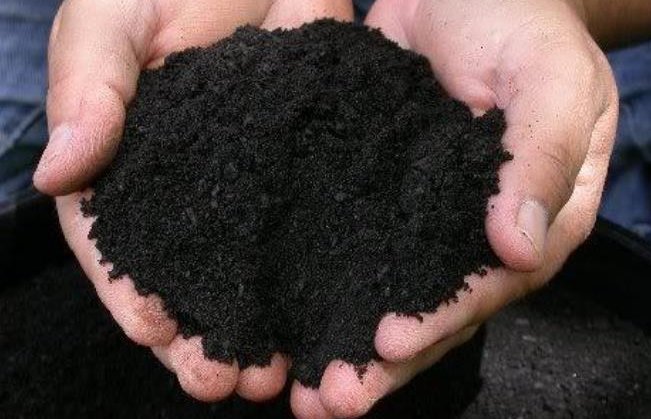
Chernozems are suitable for the vast majority of plants. On such soils grow technical, grain, fruit, pancake crops.
Summing up, it is important to say that any kind of soil requires care. For normal growth and development of plants, increasing fertility and productivity, it is necessary to apply fertilizers to the soil.
Was this article helpful?
Not really









